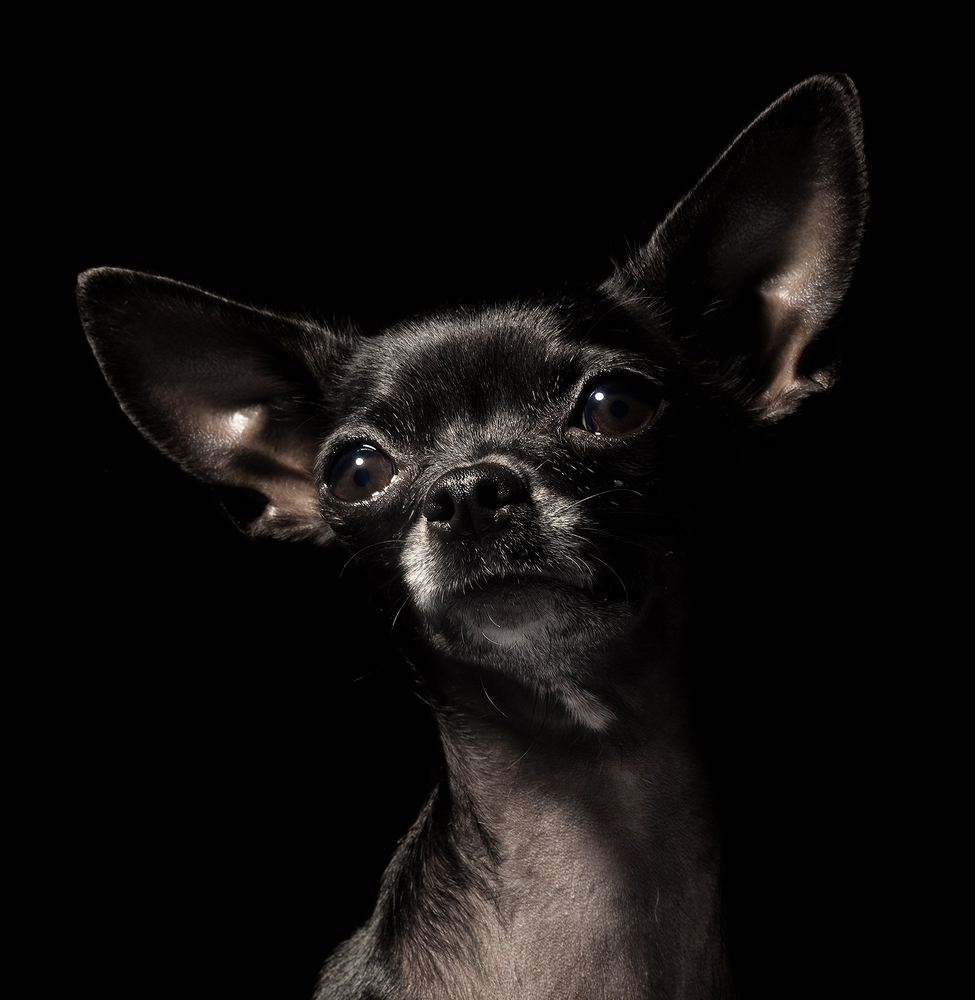
While the Chihuahua’s AKC breed standard allows any solid color (marked or splashed), but you won’t see a solid black Chihuahua very often, and maybe not ever, because it’s fairly rare occurrence. Genetically, black is a dominant color in the breed, but finding a Chihuahua that is completely black without any markings is quite uncommon. Most black Chihuahuas, in fact, have some white spots on their chests or paws.
Remember that all dog coat colors start with two basic pigments, those for black (eumelanin) and those for red (pheomelanin). The colors we see are a modification of melanin, or pigmentation cells. Many genes contribute to the changing of cells that create these pigments, and they can make the colors lighter, more intense, or impact how they combine to create the incredible coat colors and patterns of our breeds.
In the case of a solid black Chihuahua, their coat color is a result of specific genetic variations that can be categorized into two main factors: First is the presence of the dominant black gene (K) that is responsible for the presence of black pigmentation in the coat. As we wrote earlier, this gene is expressed as a dominant trait, and this means that even if a Chihuahua carries one copy of the gene, it will display a black coat color. KK, Kk(br), and Kk(y) will all express the same unless bleed-through is thrown into the mix, in which case, Kk(br) will have brindling in their bleed–through, but KK and Kk(y) will still express the same as each other). The genetics that control bleedthrough are not currently known.
The other factor that contributes to an all black Chihuahua is the suppression of other color genes that are responsible for producing other coat colors, such as fawn, chocolate, or cream. These are suppressed in all black Chihuahuas which results in the absence of any other color pigmentations in the coat.
Certainly, breeders have a huge impact on coat colors by selectively breeding for one color or another by choosing as parents a sire and dam who carry the dominant black gene (the genotype) and show it as what we can see (the phenotype). Mind you, pairing two black Chihuahuas together for the sake of color is a really bad idea because responsible breeders put health, soundness, type, and temperament over coat color. All black Chihuahuas are rare primarily because most have a small amount of white — a common occurrence in many breeds with black color (Belgian sheepdogs, Labradors, Danes) where a spot or splash of white on the chest or toes can occur. In Chihuahuas, because solid black hasn’t been preferred over black and white, this characteristic is more common in black Chihuahuas and breeding away from the white spotting requires effort and selection – but no more than breeding for an intense red in a black and red Chihuahua vice a black and tan (less intense coloring)
Read more about the K Locus (Dominant Black) gene here and here.
Our post title is in reference to the song, “Black Cadillac,” by Shinedown, and a nod to a breed many consider to the the “cadillac”of toy breeds.
Image: Chihuahua by Krakenimages/Shutterstock
